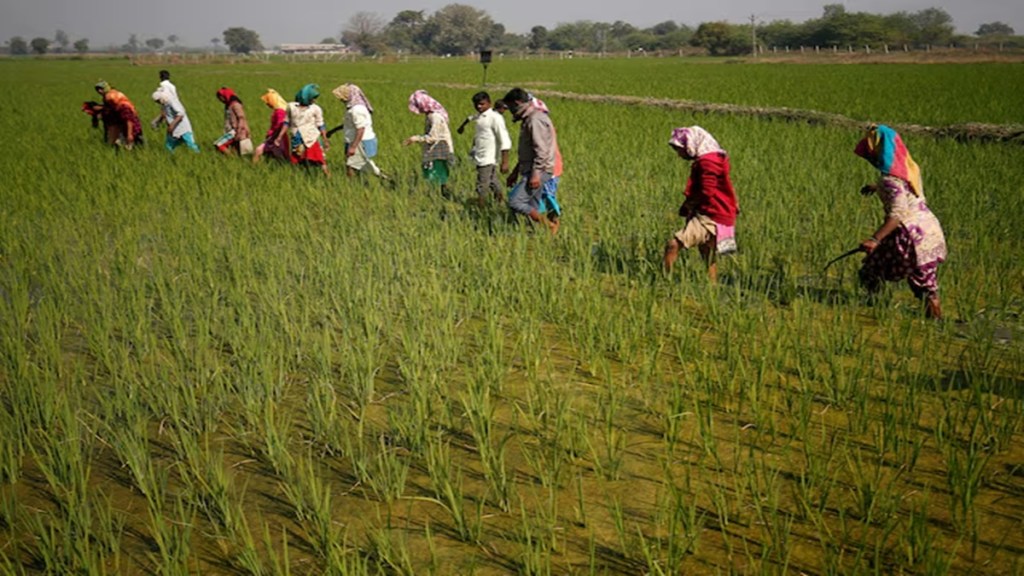Tags
The paddy pivot: Rethinking subsidies to drive sustainable farming
Repurposing govt expenditure on paddy production and procurement or creating new incentives for millet production could encourage farmers to switch.
By Amit Kapoor, Pradeep Puri and Ananya Khurana

Intensive paddy cultivation in India has long supported millions of livelihoods, but today this very lifeline is hindering the nation’s progress towards sustainability. As of 2023-24, paddy cultivation occupied 36% (47.82 million hectares) of the total area under foodgrain production. If current resource-intensive methods continue, methane and nitrous oxide emissions from paddy cultivation could surge 35-60% by 2030, due to the over-use of water and fertilisers and paddy residue burning. This underscores the urgency for Indian agriculture to rethink its practices in pursuit of sustainability. Particularly, agrarian states like Punjab and Haryana, which contribute only 8.8% and 3.8% respectively to the national pool of food grains, can reduce paddy production without jeopardising national food security. Instead, central and eastern states of India, like Chhattisgarh, Jharkhand, and Bihar that have abundant land and water resources, can intensify paddy production. The declining agricultural growth rates in Punjab (1.4%) and Haryana (4.1%) over the past five years further highlight the need for moving away from paddy for a sustainable future.
Compared to paddy, the minimum support price (MSP) for millets (bajra and jowar) is higher, and the cost of producing millets is lower, yet most farmers resort to paddy production. This underscores the need for a paradigm shift in traditional agricultural practices and the mindset of farmers, such that the prospect of millet cultivation shines brighter than that of paddy. The missing piece? Financial incentives. Repurposing current government expenditure on paddy production and procurement or creating new incentives for millet production could encourage farmers to switch to this less resource-intensive crop, easing the fiscal burden on the government.
In 2024, Punjab and Haryana introduced a cash incentive of `17,500 per hectare (ha) to encourage paddy farmers to switch to millet cultivation. However, the gross profit from paddy production in Punjab (`53,479/ha) and Haryana (`30,048/ha) exceeds the offered incentives. Consequently, the current cash incentives are insufficient to motivate farmers to make the switch. Additionally, farmers’ sensitivity to yield and income fluctuations makes them resistant to new agricultural practices. Therefore, the incentive mechanism needs an overhaul to adequately encourage paddy farmers to adopt environmentally beneficial practices without compromising their economic welfare or the country’s food security.
Some studies suggest that doubling the incentive to `35,000/ha, shared equally between the central and state governments, can effectively nudge farmers away from paddy production. From the lens of economic rationality, redirecting government expenditure on fertilisers, power, and irrigation, and the costs incurred by the Food Corporation of India for paddy procurement at MSP, towards millet production could help chalk out a fool-proof incentive mechanism. As of 2023-24, to support paddy production and procurement, the central and state governments of Punjab and Haryana spent `1,55,004/ha and `83,836/ha respectively, almost three times the gross profit of paddy farmers. Instead, a fund can be established to provide upfront cash incentives to farmers via a direct benefit transfer (DBT) system for not growing paddy. Instead, farmers could cultivate more sustainable crops like millets or leave the land fallow. The central and state governments could jointly offer cash incentives that are at least as much as the gross profit earned by the paddy farmers of both states. So, a cash incentive of `53,479/ha seems justified.
The suggested cash incentive would make the paddy farmers of Haryana better off and neutralise the paddy farmers of Punjab. Meanwhile, government expenditure on production subsidies and paddy procurement would be halved. Assuming paddy area, production, and yield remain constant at 2023-24 levels, the government could save over `6 lakh crore in Punjab and Haryana in the next 10 years.
These savings could be reinvested to establish a price stabilisation fund for millets, build infrastructure to boost millet exports, and promote environmental rejuvenation.
A win-win situation can be envisioned for farmers, the government, and the economy, given that the suggested cash incentives are seamlessly provided to the farmers through a DBT system. This would encourage farmers to move away from paddy cultivation, achieve agricultural sustainability, and pave the way for their financial growth. Similar incentives could spark a boom in the cultivation of other less resource-intensive but economically lucrative crops like maize, pulses, and oilseeds.
https://www.financialexpress.com/opinion/the-paddy-pivot-rethinking-subsidies-to-drive-sustainable-farming/3832491/Published Date: May 5, 2025






